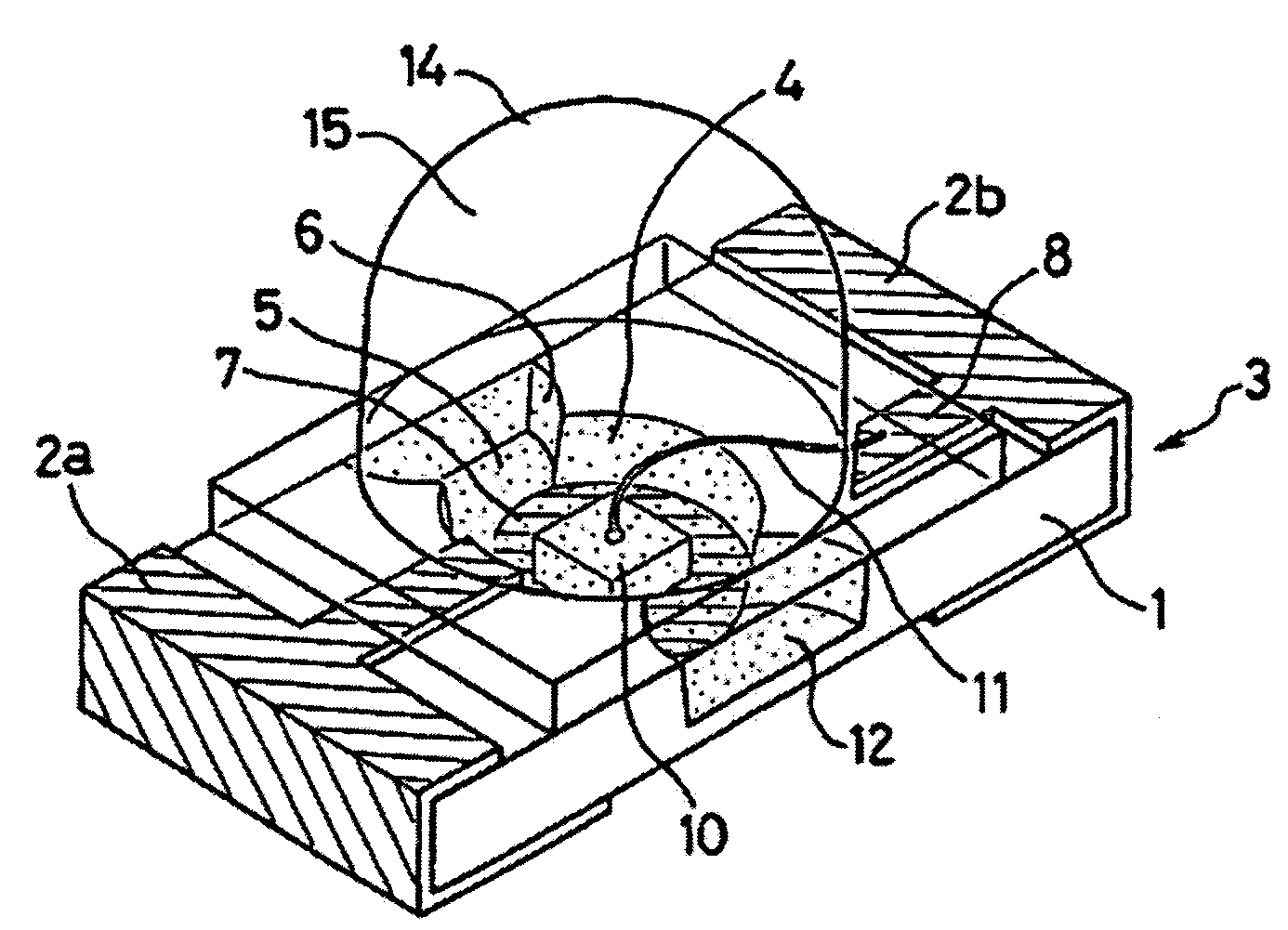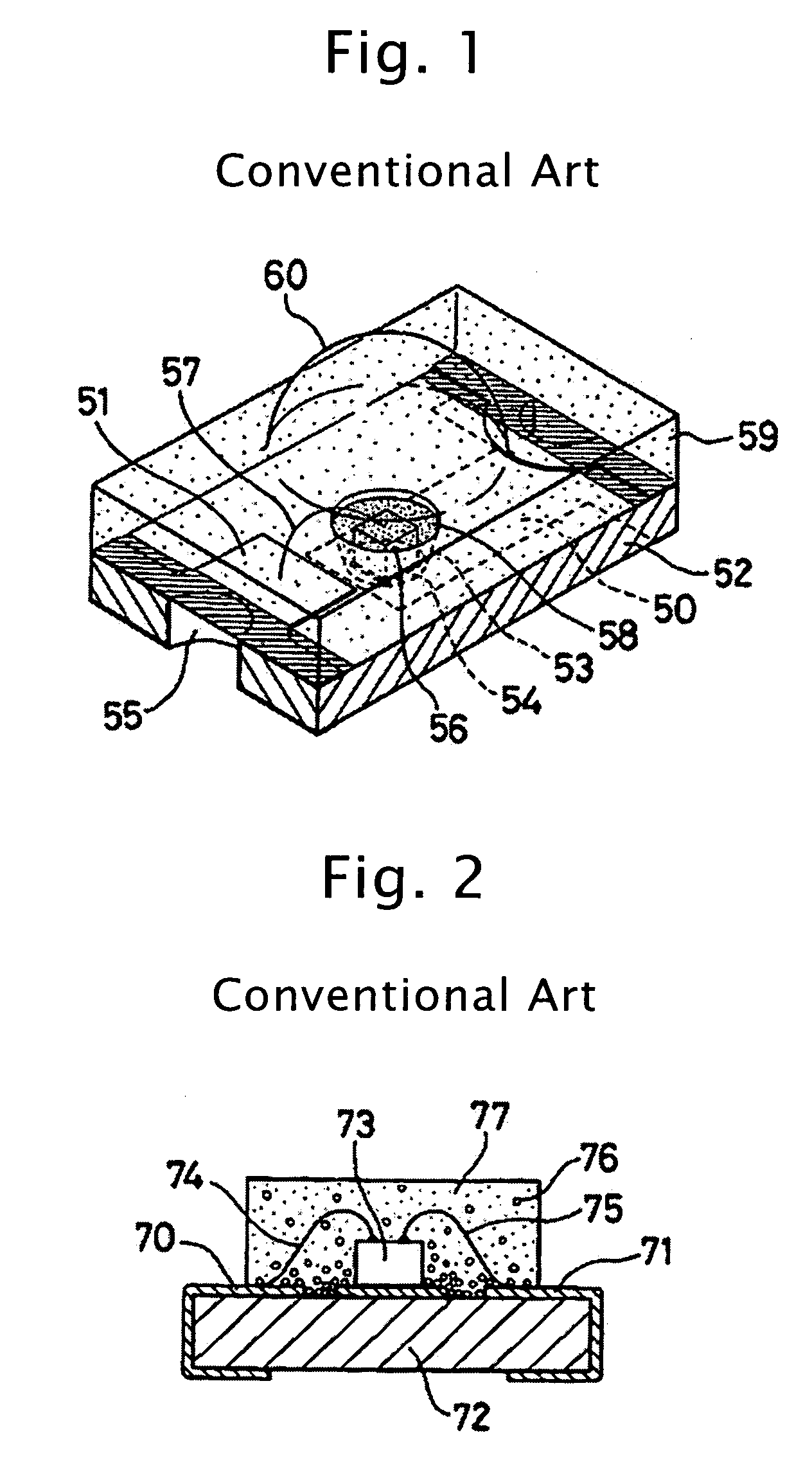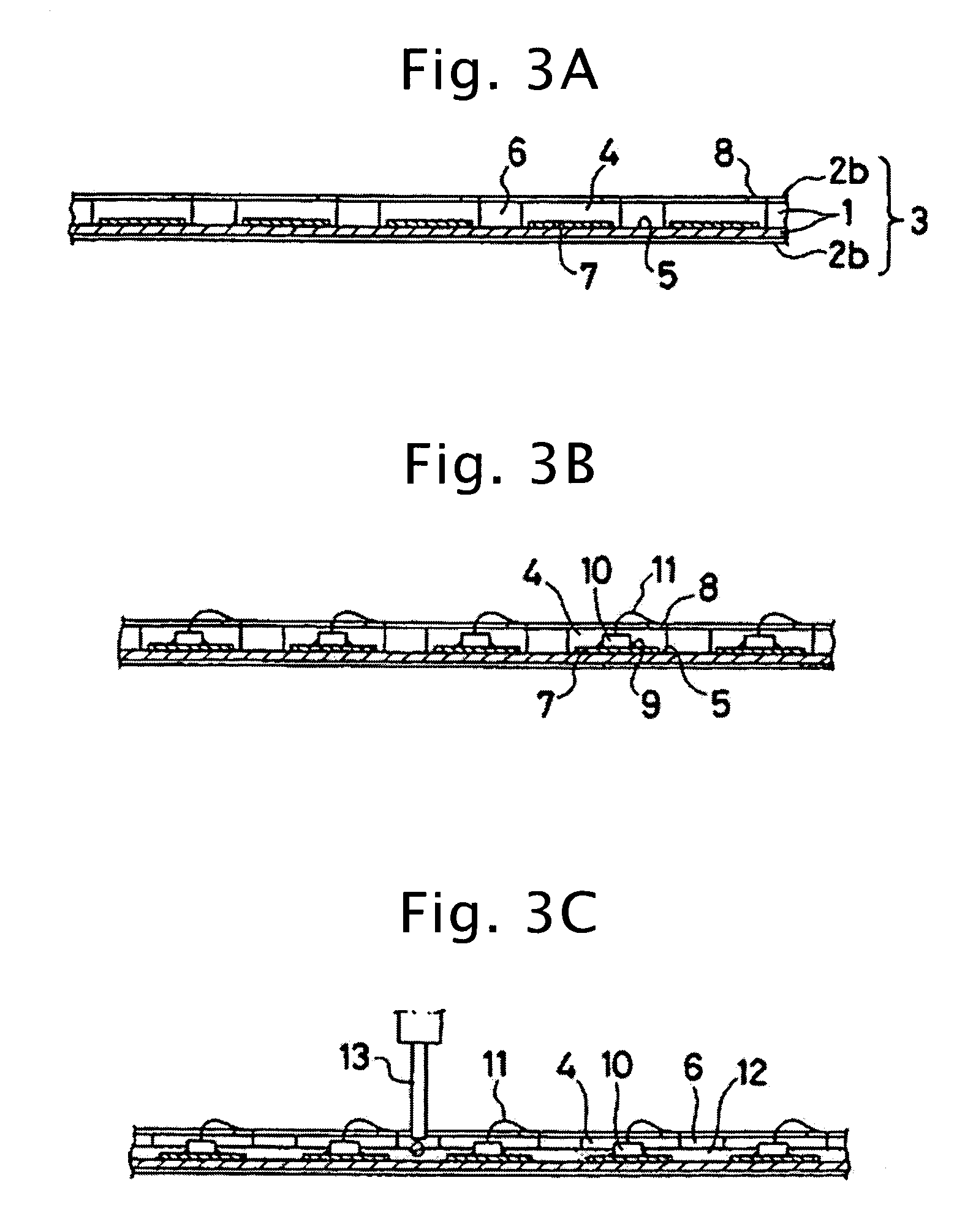LED device and method for manufacturing the same
a manufacturing method and led technology, applied in the manufacture of electrode systems, discharge tubes luminescent screens, electric discharge tubes/lamps, etc., can solve the problems of unstable amount and characteristics of injected resin, difficulty in controlling the amount of first resin and reproducing that amount, and large capacity of fluorescent resin as a whole, so as to improve the accuracy of filling the fluorescent resin with respect to the concave portion. , the effect of small variation of color ton
- Summary
- Abstract
- Description
- Claims
- Application Information
AI Technical Summary
Benefits of technology
Problems solved by technology
Method used
Image
Examples
Embodiment Construction
[0039]An exemplary embodiment of the invention will now be described in detail, with reference to FIGS. 3A to 3E, 4A, 4B, and 5 (the same or similar components are labeled with the same reference numerals). The exemplary embodiment to be described hereinafter is an example of the invention, and various technical features are imposed thereon. However, the scope of the invention is not limited to the exemplary embodiment.
[0040]FIGS. 3A to 3E are cross-sectional views showing respective processes of an LED device manufacturing method according to an embodiment of the invention. FIG. 4A is a top plan view corresponding to the process of FIG. 3A and FIG. 4B is a top plan view corresponding to the process of FIG. 3B.
[0041]First, a multiple LED substrate 3 having a plurality of LED device regions is prepared, as shown in FIGS. 3A and 4A. This substrate 3 can include an insulating portion 1 formed by an insulating member and a pair of conductor patterns 2a and 2b. These conductor patterns 2...
PUM
| Property | Measurement | Unit |
|---|---|---|
| transparent | aaaaa | aaaaa |
| shape | aaaaa | aaaaa |
| color tone | aaaaa | aaaaa |
Abstract
Description
Claims
Application Information
 Login to View More
Login to View More - R&D
- Intellectual Property
- Life Sciences
- Materials
- Tech Scout
- Unparalleled Data Quality
- Higher Quality Content
- 60% Fewer Hallucinations
Browse by: Latest US Patents, China's latest patents, Technical Efficacy Thesaurus, Application Domain, Technology Topic, Popular Technical Reports.
© 2025 PatSnap. All rights reserved.Legal|Privacy policy|Modern Slavery Act Transparency Statement|Sitemap|About US| Contact US: help@patsnap.com



